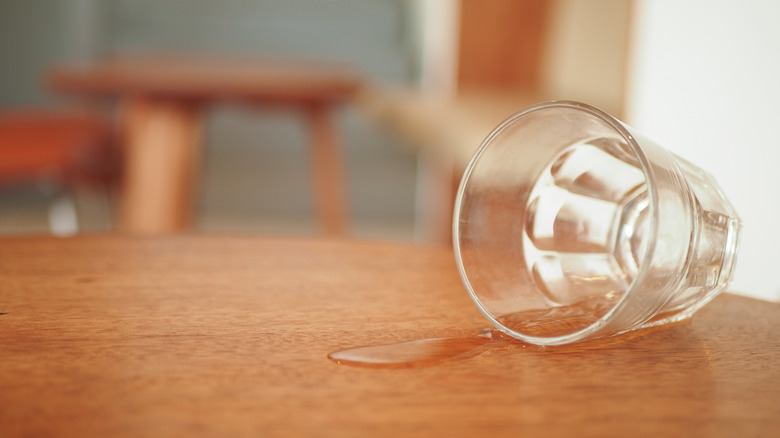Say Goodbye To Hairline Cracks In Glassware With One Simple, Affordable Solution
It can be devastating when a beloved piece of your collection gets damaged. Thankfully, not all damage is final, and with glass, most cracks are repairable. This doesn't apply to the hundreds of tiny pieces you get when you accidentally drop the rice jar while hastily retrieving it from the tall cupboard, but it will save glassware that's developed hairline cracks before they turn into something more serious. For better results, these abrasions should be handled as soon as possible.
To fix cracked glass, you'll need two-part epoxy for glass, which you can get on Amazon or from Home Depot and other DIY hot spots for less than $15. Then, grab a disposable surface where you can mix the product together, like a plastic vessel or a paper plate, and a small stick to apply it with, like a popsicle or cocktail stick. To remove the excess glue, you'll need a damp cloth, and a razor or utility knife blade for stubborn bits. If needed, use ultra fine, diamond, 800 to 1,000-grit sandpaper to smooth out the glass, and a cerium oxide glass polisher to restore the shine (toothpaste and baking soda will do the trick, too). Gloves and safety glasses will keep you protected.
This method should not be used on any surface that will be in direct contact with heat, namely any dishes you use to serve warm food and beverages, or anything you intend to microwave or put in the dishwasher. Properly cured epoxy resin is food safe, though, so, once fully hardened, your patched up glass can be in contact with cold liquids and foods.
How to patch up cracks in glass
To repair cracked glass, start by making sure your glass piece, work surface, and tools are clean, dust free, and dry. Any small particles can impact the epoxy's efficiency and ruin this DIY. Next, using the stick, mix the two epoxy components, the resin and the hardener, following the ratio and instructions of the specific brand you're working with. Take the stick and begin applying the mixture to the glass, making sure you start right from the very beginning to stop the crack from spreading. Depending on the type of dish you're repairing and whether you can reach both sides of it with your hand, carry out this process both on the inside and the outside.
Follow the manufacturer's drying guidelines. Later, remove the excess glue with a damp cloth. If that isn't enough, take your blade and carefully scrape out the glue at a low angle away from you. For deeper cracks, you may need more than one coat of glue, so repeat the process. When you're done, if the outer area feels rough to the touch, sand it out with wet sandpaper, starting with a 800-grit sheet, dipped in water, followed by 1,000-grit. A few quick strokes of the former should be enough, while the latter should be used until the surface feels smooth. Clean and dry the glass. Conclude by polishing it with the cerium oxide and a soft cleaning rag.

